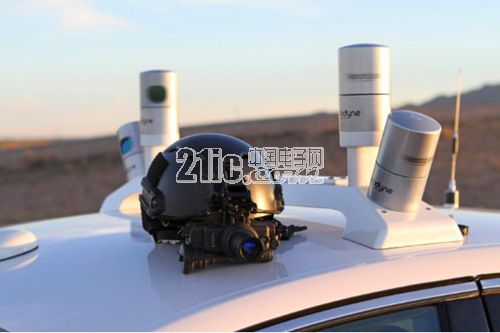The auto industry is constantly introducing new jargon to confuse us, and thanks to that, we now know that driverless cars are "coming soon." Some manufacturers predict that autonomous vehicles will hit the commercial market as early as 2021. However, the cost of new technology remains high, and most people won’t be able to afford it for a while. Let’s explore this topic with our car electronics editor.
Lidar (Light Detection and Ranging) is one of the most expensive components in self-driving cars. This laser-based imaging system allows autonomous software to "see" the road. High-end systems can cost up to $100,000, while lower-end models may cost less than $10,000. While emerging technologies tend to be expensive at first, history shows that manufacturers often find ways to reduce costs over time. But for driverless cars, the timeline is tight, meaning either high costs or delayed production could become a reality.

Unmanned driving is not possible without lidar. Carmakers might try to use cheaper hardware to cut costs, but this comes with significant risks. Why? Because autopilot systems place a huge responsibility on manufacturers. Even mid-range lidar systems can feel like a gamble when it comes to safety. According to the MIT Technology Review, low-end lidar systems are essentially useless at highway speeds.
MIT studied two lidar systems from Velodyne: the HDL-64E, which costs around $80,000, and the Puck, priced at just $8,000. The HDL-64E uses 64 laser beams to create detailed images of the surroundings, with a range of up to 120 meters. The Puck, on the other hand, only has 16 beams, leading to quick image distortion and a maximum range of about 100 meters. At low speeds, both systems work well, but at normal highway speeds, the Puck fails to perform.
The issue is that even the HDL-64E barely meets the minimum requirements for freeway driving. At 70 miles per hour, a car moves 31.3 meters every second. If an emergency arises, the vehicle needs at least 60 meters to stop completely. Every extra meter gives the computer more time to react. Ideally, a lidar system should provide clear images up to 200 meters away to ensure safety at highway speeds.
One potential solution is solid-state lidar systems, which are much cheaper than traditional ones. Quanergy claims to have developed a $250 component for its S3 car, but the image quality is low. It only works effectively at ultra-low speeds (under 10 mph), making it unsuitable for highway driving. Velodyne is also working on affordable solid-state options, but they admit these systems can't fully replace 360-degree laser systems.
Luminar CEO Austin Russell explains why his company avoids solid-state hardware. The main reason is that traditional laser systems, despite being expensive, offer more detailed images, which are crucial for safety. He says, “If you only see a few points, even with advanced machine learning, it's not helpful because you don’t know what the object is. If you can only see things 30 meters away, that’s just one second of distance at highway speed.â€
Graeme Smith, head of Oxford University’s driverless program, believes the lidar industry will eventually find a balance between image quality and price. This could allow different versions of self-driving cars to coexist—some for low-speed environments and others for highways. He adds, “Low-speed versions may see faster price drops. If you need a lidar to cover more than 250 meters, you’ll need a better system. For low-speed use, a cheaper sensor covering 15 meters might be sufficient.â€
Still, using low-quality lidars increases overall costs. Industry experts and automakers estimate that adding unmanned hardware could raise a car’s price by $8,000 to $10,000, though the actual cost may be higher. When you factor in all the hardware needed for testing, the final price becomes staggering. Tesla aims to reduce the radar cost to $8,000, but it also installs expensive cameras, computers, and inertial measurement units (IMUs), which are useful when GPS is unavailable. Many worry that Tesla’s radar images aren’t clear enough.
Additionally, if companies use high-definition lidar systems, they might need to switch to radar or shut down the system in foggy conditions. In a recent interview with Axios, Luminar’s Russell said that for a driverless car to be sold, safety must be the top priority. He emphasized the need to minimize the "critical failure rate" and ensure the images are extremely clear.
Russell believes perfecting the technology could cost between $300,000 and $400,000. This price tag is acceptable for fleet owners who benefit from ride-sharing, which is a profitable business model.
In conclusion, the realization of autonomous driving is closely tied to lidar technology. As the industry continues to evolve, balancing cost, safety, and performance will be key. Stay tuned for more updates on automotive electronics and the future of self-driving cars.
Cixi Xinke Electronic Technology Co., Ltd. , https://www.cxxinke.com
